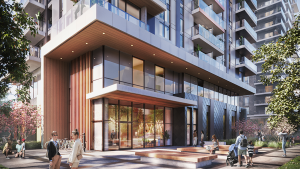The Canadian construction industry is facing serious challenges on a number of fronts, says Helen Goodland, head of research and innovation at Vancouver-based Scius Advisory Inc.
“Building codes and regulations are tightening as we move towards a lower-emissions future, there is and will continue to be a labour shortage, materials prices keep going up and international competition is testing the local market,” said Goodland.
To deal effectively with those challenges, the industry needs to embrace innovation and technology, she says.
“Business as usual is no longer an option,” Goodland said. “Construction companies need to start thinking about innovation as an investment, not an expense.”
At the upcoming (February 12-13) Buildex Vancouver 2020 exhibition and forum, members of the B.C. construction industry have a choice of presentations where they can learn about the latest in innovation and technology.
For example, Shane Troyer will give some tips on how to make companies more cyber-safe.
As part of his presentation, Troyer, who is regional practice leader, risk and forensic services at Grant Thornton LLP, will perform a live computer hack demonstration.
Troyer says cybercrime — such as viruses, data ransom and theft — is a serious risk to all businesses, construction included.
“Many of us think it will never happen, but, in reality, the question is not if you will be attacked, but when,” said Troyer.
In his presentation, Troyer will discuss the common mistakes construction companies make that leave them open to cyber-attacks.
“There are two main kinds of attacks,” said Troyer. “A direct attack, in which a hacker tries to breach a network firewall, and an indirect approach, called social engineering, whereby a hacker tries to gain passwords by convincing employees he is legitimate.”
Examples of this are phishing, spear phishing and whaling (going after the big fish at the top of a company).
Troyer says the main computer security problem to be solved is not technology, but people.
“People need to be careful so they don’t get caught off guard by a lurking hacker,” he said.
As bigger companies get better at protecting their networks, many hackers are moving on to smaller companies, where their chances of success are greater.
“That means that small contractors and construction sub-trades are not safe,” he said.
Cyber attacks are increasing in frequency and severity.
“There are organizations for hire that can send out thousands and thousands of cyber-attack messages,” Troyer said. “And ransomware can be purchased online for as little as $39.”
The Internet of things — such as security cameras, fridges, smart TVs, etc. — is also vulnerable.
“For example, if a hacker breaks into a security camera, he can watch people enter their passwords into their smart phones,” said Troyer.
In a live demonstration, Troyer will show how easy it is to break into a security camera that he will bring to the presentation.
In another Buildex Vancouver 2020 presentation, engineers, contractors, architects and developers can learn about something called engineering visualization.
“Most people are familiar with architectural visualization, which is often focused on making the building look as beautiful and attractive as possible,” said presenter Tyler Disney, California-based lead visualization engineer with engineering consultants Integral Group. “What I do is engineering visualization for buildings. It has a different emphasis, focusing on explaining how complex systems make a building work, and helping people make better decisions about those systems.”
Disney will explain why it’s important for engineers to be able to communicate visually.
He’ll go through some of the challenges of doing engineering visualization and present a basic workflow for getting a visualization program up and running.
Disney says that, early in his engineering career, he learned it was difficult to communicate technical ideas to non-technical audiences.
“My frustration became panic as I learned how urgent it is to do better engineering in the face of catastrophic climate change and resource depletion,” he said.
Thereupon Disney set out to learn how to communicate technical concepts visually.
“When we have an innovative idea for a more sustainable approach to design, we have to explain what we want to do and how it’s going to work, getting buy-in from the team to moving forward with it,” he said. “Many designs are not immediately intuitive. They are related to all the other systems in a building in a very complex way that isn’t easy to understand, even if you have a technical background.”
W31 Is Your Organization Cyber-Safe? is slated for Wednesday February 12.
T12 Visualizing Engineering: Towards a New Design Vernacular
is on Thursday, February 13.
Both Buildex Vancouver 2020 presentations take place at Vancouver Convention Centre West.











Recent Comments
comments for this post are closed